The history of Filipino textile production is rooted in ancient weaving traditions. Abaca, cotton, and piña were the primary materials used in pre-colonial techniques. These sophisticated methods were influenced by various regions in the Philippines, showcasing the country's rich cultural heritage.
The arrival of the Spanish led to the introduction of new materials and designs, which blended with existing styles. For example, the use of silk and wool became more prevalent, and Spanish-style embroidery was incorporated into traditional Filipino clothing****. This blending of styles resulted in unique and intricate textile designs.
The subsequent American occupation led to a decline in traditional textile production methods, as mass production became the norm. Many traditional weavers were forced to adapt to new machinery and techniques, leading to a decline in the use of traditional materials and methods. This shift had a significant impact on the textile industry.
In recent years, however, there has been a revival of traditional textile production methods. Modern designers have begun incorporating traditional elements into their designs, resulting in a unique blend of old and new techniques. This revival has helped to preserve the country's cultural heritage and promote sustainable textile production practices.
Ancient Weaving Traditions
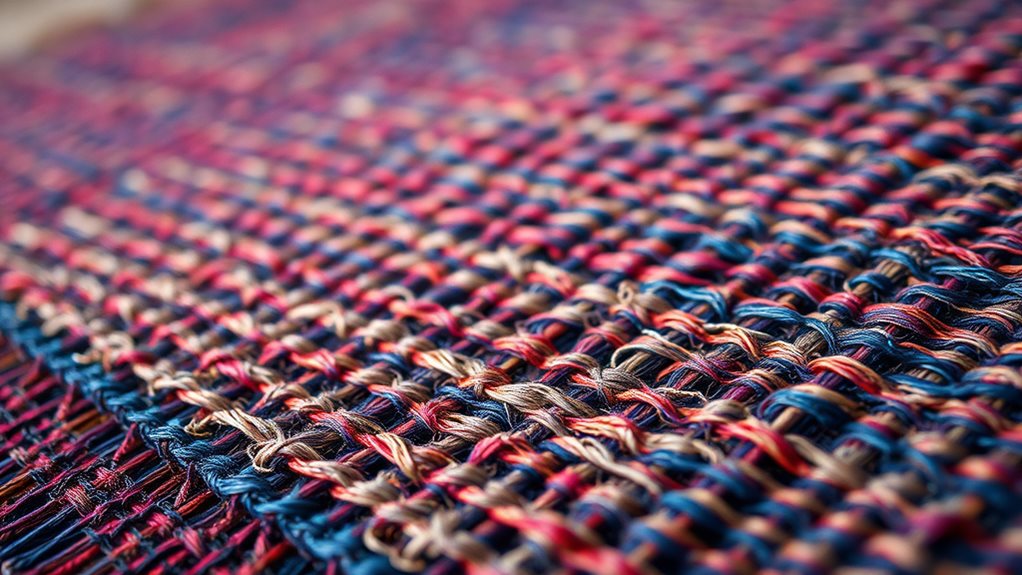
The Philippines has a rich history of weaving that spans hundreds, if not thousands, of years. This history is attributed to divine intervention by some indigenous groups, such as the Ifugao and the B'laan of Mindanao. They believe that their deities, Punholda'yan and Furalo, respectively, introduced weaving to their communities. This spiritual connection underscores the symbolic value of textiles in their culture.
Archaeological evidence confirms the long history of weaving in the Philippines. Excavations have uncovered tools like bark-beating implements and spindle whorls dating back to the Neolithic Period. For example, a clay spindle whorl found in Cagayan Valley is estimated to be from 2610-2130 BC.
Additionally, pottery imprints and net-like designs on anthropomorphic burial jars in Mindanao demonstrate the use of woven cloths during the Metal Age.
Regional variations in weaving techniques and designs are distinct and widespread. Different regions, such as Northern Luzon, the Visayas, and Mindanao, have developed unique aesthetics, employing diverse materials and weaving methods.
For instance, Yakan textiles from Basilan are known for their intricate designs**, while T'boli women are renowned for their abaca ikat (T'nalak). Similarly, Inabel textiles from Ilocanos have had a significant historical impact. These examples reflect the rich diversity of Filipino weaving traditions and the deep-seated cultural identity** they represent.
Pre-Colonial Textiles
Filipinos established a sophisticated textile production system before the arrival of colonizers.
They utilized natural fibers such as abaca, cotton, and piña**. Abaca, also known as Manila hemp, was a strong and durable fiber, while piña, extracted from pineapple leaves, was prized for its softness and luster. Tapa, created from beaten bark, was another readily available material. The mastery of weaving techniques, particularly the backstrap loom**, allowed for intricate patterns and textures.
Weaving held considerable cultural importance in pre-colonial Philippines. It was often a woman's role, passed down through generations, with each community developing its own unique designs and patterns. These designs narrated myths and histories, imbuing textiles with deep meaning and symbolic representation.
Regional diversity in styles and materials was prominent in pre-colonial Philippines. The Igorot used plant fibers in the mountainous regions, creating garments suited to their environment. The Tagalogs and Visayans favored cotton or silk for loose-fitting clothing.
The Yakan, T'boli, and Ilocano peoples developed their own distinctive styles, including vibrant Yakan cloth, intricate t'nalak, and refined inabel. These regional variations highlight the dynamism of pre-colonial textile production.
Internal trade networks facilitated the exchange of textiles and specialized production amongst various groups. This showcases the sophisticated economic and social systems already in place before colonization.
Spanish Colonial Influence
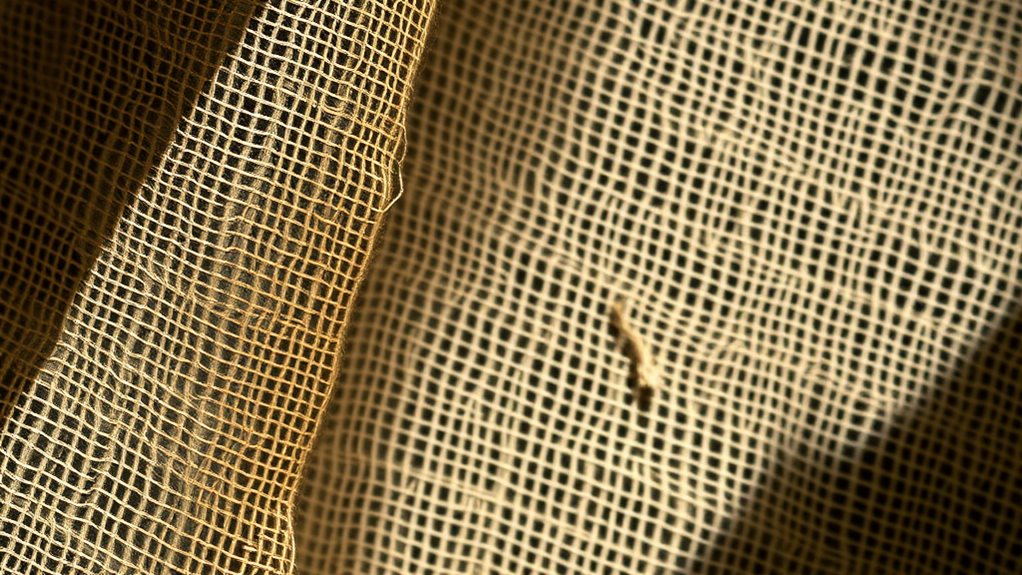
The Spanish Colonization of the Philippines Transformed the Country's Textile Industry****
The arrival of the Spanish in the Philippines introduced new materials and techniques that blended with indigenous styles, resulting in unique textile innovations. New materials like silk, linen, and satin were incorporated into traditional textile production, while the pedal loom replaced some backstrap loom techniques.
The Impact of Colonial Trade on Textile Production
The Manila-Acapulco galleon trade played a crucial role in distributing textiles, including silks and cottons from China and India. Provinces like Ilocos, Iloilo, Maguindanao, and Sulu became actively involved in this colonial trade and textile production.
As a result, the annual export of piña, silk, and other manufactures exceeded the value of other major exports, highlighting the economic importance of the textile industry.
The Fusion of European and Indigenous Styles
Spanish influence blended with local craftsmanship, creating distinctive designs reflecting the hybridity of Philippine colonial society. European-style embroidery and decorative techniques were incorporated, enhancing the cultural importance of textiles.
The barong tagalog, a formal shirt made from piña or silk, is a prime example of this fusion of styles.
Key Points About the Spanish Impact on Philippine Textiles
- The introduction of new weaving techniques and materials broadened the scope of textile production.
- Colonial trade shifted production towards export, increasing economic relevance.
- A fusion of European and indigenous styles created unique textile designs.
- The legacy of this era is seen in the exquisite embroidered textiles preserved today.
Legacy of the Spanish Era in Philippine Textile History
This period laid the groundwork for future textile developments, demonstrating how colonial trade and textile innovation shaped Philippine textile history.
Piña Fabric's Rise
The Origins of Piña Cloth****
Piña cloth, a unique Philippine textile, originated from the introduction of pineapples by the Spanish in the 16th century. The Red Spanish pineapple, prized for its long leaves, became the crucial source for piña fibers.
Filipinos adapted existing weaving techniques to utilize the pineapple leaf's fibers, and by the 1570s, piña fabric production had begun, primarily in Kalibo, Aklan, and on Panay island.
The Labor-Intensive Production Process****
The production of piña cloth involved a meticulous process. Fibers were extracted using simple tools like porcelain or coconut shells.
The fibers were then cleaned, pounded, and washed repeatedly before drying. Each fiber was painstakingly hand-knotted, a technique known as *pagpisi*, to create continuous strands.
These were then warped, spun, and woven on a traditional foot-operated loom. Natural dyes added vibrant colors, reflecting local ingenuity.
Piña's Golden Age and Decline
Piña's golden age arrived in the late 18th and 19th centuries, captivating European aristocracy with its airy quality and intricate embroidery.
The María Clara ensemble, a traditional piña garment, became a symbol of Filipino identity, worn by Filipinas across social classes.
Piña textiles became luxury items, exchanged as gifts to royalty, representing wealth and status.
However, the industry declined in the early 20th century due to cheaper textiles and shifting Western fashion trends, compounded by the devastation of World War II.
American Occupation's Impact
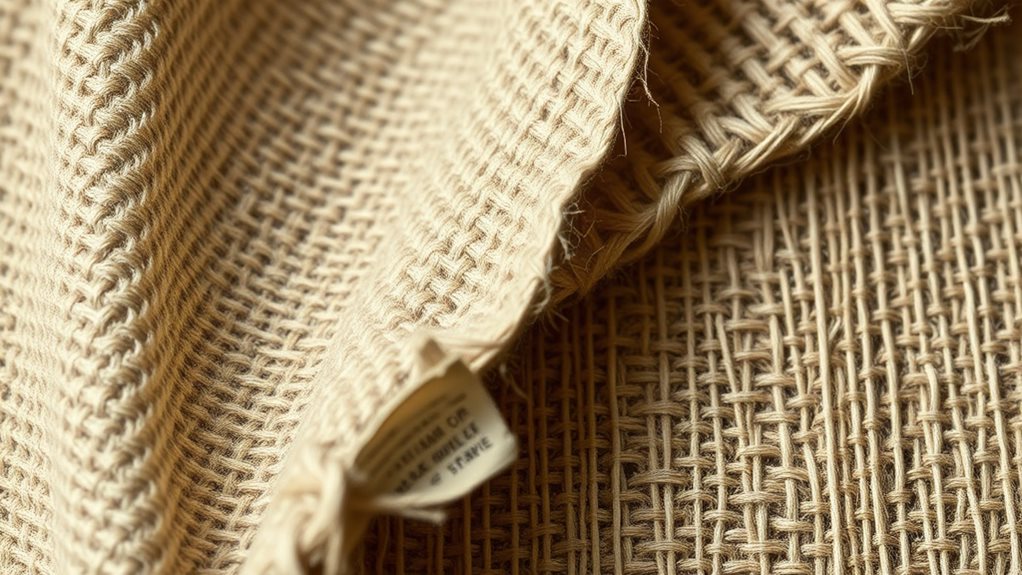
The American occupation that followed the 1898 Spanish-American War and the Philippine-American War significantly impacted the Filipino textile industry.
The introduction of English alongside Tagalog subtly shifted cultural perspectives**. This shift can be observed in the changing attitudes towards traditional attire**, which was once a source of pride but was gradually devalued as Western clothing became a status symbol.
The occupation also led to the introduction of mass production techniques, transforming handcrafted textiles into readily available consumer goods.
This shift resulted in cheaper alternatives, undermining traditional industries and creating a dependence on foreign markets****. For instance, the use of cornstarch, an American invention, altered textile production.
The impact of American occupation on fashion was notable, with the adoption of Western styles influencing designs like the terno.
Even physical education classes integrated Western fashion, spurring an emulation of Hollywood styles among laborers. This further highlighted the growing economic disparity between those who could afford Western trends and those who couldn't.
The period saw an increase in apparel exports, but this coincided with a decline in domestic employment.
Thousands of Filipinos were exposed to Western culture while seeking economic opportunities, but many faced poor working conditions and deepened economic disparity.
The economic gap between those who embraced Western trends and those who couldn't widened significantly.
The lasting consequences of this period can be seen in:
- The decline of traditional textile production methods.
- The emergence of a new fashion landscape dominated by Western styles.
- The widening of the economic gap.
- The enduring struggle to balance cultural preservation with economic advancement.
Traditional Textiles Decline
The decline of traditional Filipino textile production was caused by economic, cultural, and environmental pressures.
The dwindling availability of raw materials like abaca and cotton significantly impacted the economic sustainability of traditional textile production. The high cost of these natural materials, combined with low demand for traditional textiles, made it difficult for weavers to maintain profitability. For example, the cost of abaca fibers increased, forcing many weavers to look for alternative, cheaper materials. This shift affected the quality of their products and further reduced demand.
The influx of cheaper, mass-produced imports also contributed to the decline of traditional textile production. These imports undermined local artisans and their unique designs, making it difficult for them to compete in the market. Many local weavers struggled to adapt to the changing market and were eventually forced to abandon their craft. Younger generations, seeking higher-paying jobs, opted to work in urban centers rather than continue their families' traditional weaving businesses.
The cultural shift towards Western fashion also played a significant role in the decline of traditional Filipino textiles. The preference for global trends, fueled by media's portrayal of Western aesthetics, diminished the appreciation for traditional Filipino clothing. This created a vicious cycle where less demand led to less production, further threatening the survival of the craft. The lack of economic incentives and limited opportunities for growth within the traditional weaving sector made it difficult to support and sustain the craft.
The lack of domestic support and a preference for imports were the primary contributors to the textile industry's struggle. The absence of robust strategies for community engagement and empowerment further hampered the industry's ability to adapt and thrive in a globalized market.
To revitalize traditional Filipino textile production, it's essential to address these underlying issues and develop effective strategies to promote and support local artisans.
Revival Efforts Begin
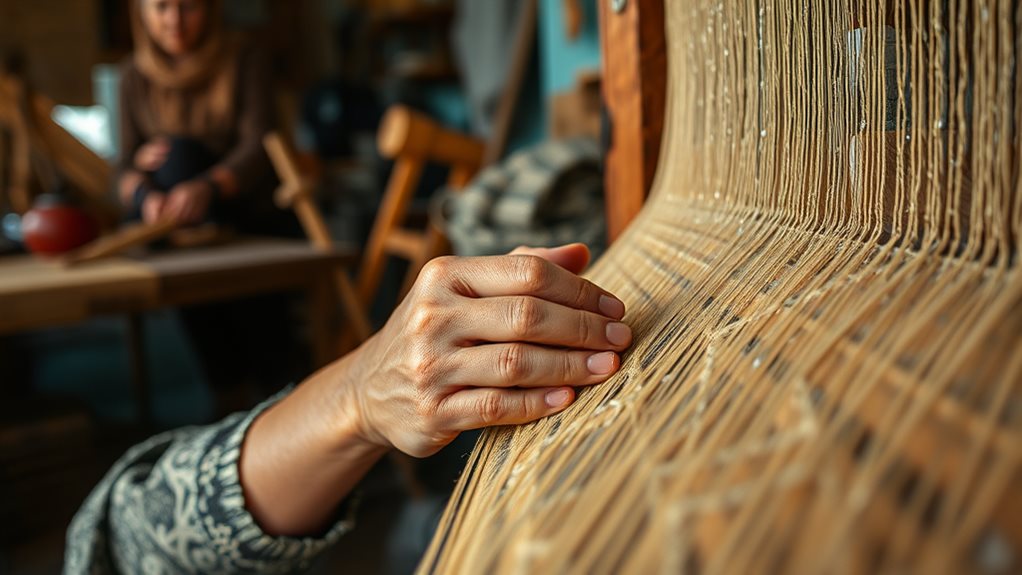
Efforts to revitalize the declining traditional Filipino textile industry are underway, addressing economic, cultural, and environmental challenges that have hampered its growth for decades.
Social enterprises like ANTHILL Fabric Gallery play a crucial role in empowering communities by training skilled weavers in leadership and financial literacy, enabling them to become self-reliant. This training also leads to increased visibility and credibility through partnerships with businesses.
Additionally, these social enterprises focus on sustainable practices and circular manufacturing. A significant portion of their sales originates from the global market.
Community-based initiatives also support artisans by providing them with livelihoods, often targeting women. These initiatives introduce or innovate traditional textile weaving methods.
The Garments and Textile Industry Roadmap, a three-phased plan (2020-2029) by the government, aims to address challenges and improve the industry's competitiveness.
Educational and cultural preservation initiatives engage the younger generation through workshops and training programs. Organizations like HABI educate on cultural appropriation and the importance of preserving traditional textile techniques.
Key aspects of the revival:
- Weavers gain financial independence and leadership skills through community empowerment programs that focus on training and financial literacy.
- Circular manufacturing and eco-friendly materials are prioritized in sustainable practices, ensuring a reduced environmental impact.
- Artisans are connected with both local and international markets through social enterprises and government initiatives, increasing market access.
- Traditional weaving techniques and knowledge are guaranteed to continue through educational programs and cultural preservation initiatives.
Modern Filipino Textiles
Traditional Filipino Textiles in Modern Fashion****
Integration of Traditional Techniques in Modern Design
Traditional Filipino textile weaving techniques have seen a resurgence in modern fashion, showcasing the fusion of these techniques into contemporary designs. Designers pair traditional fabrics like piña and jusi with modern styles, such as asymmetric gowns and palazzo pants****.
Banig designs are also incorporated into Terno gowns or inspire embroidery on cocktail dresses, blending traditional and modern elements.
Modern Interpretations of Traditional Patterns
Classic motifs like the sarimanok and okir are reinterpreted in modern clothing and accessories. Designers create stylish and culturally meaningful pieces, such as handcrafted shoes incorporating traditional textiles.
These reinterpretations ensure traditional textiles continue to evolve.
Sustainability in Modern Filipino Textiles
Sustainability is increasingly important in modern Filipino textiles. Brands like Mestiza Filipina emphasize ecological consciousness by using eco-friendly materials and organic dyes****.
Sustainable fabrics minimize environmental impact without sacrificing style. The use of natural materials like pandan in banig production aligns with sustainable practices.
Valuing Authenticity and Craftsmanship
Handcrafted shoes and premium accessories highlight meticulous attention to detail. Brands like Mariqueño prioritize Filipino craftsmanship, blending traditional textiles into contemporary designs.
This emphasis on authenticity transforms how consumers perceive fashion, valuing the integrity of materials and cultural relevance****.
Cultural Preservation Today
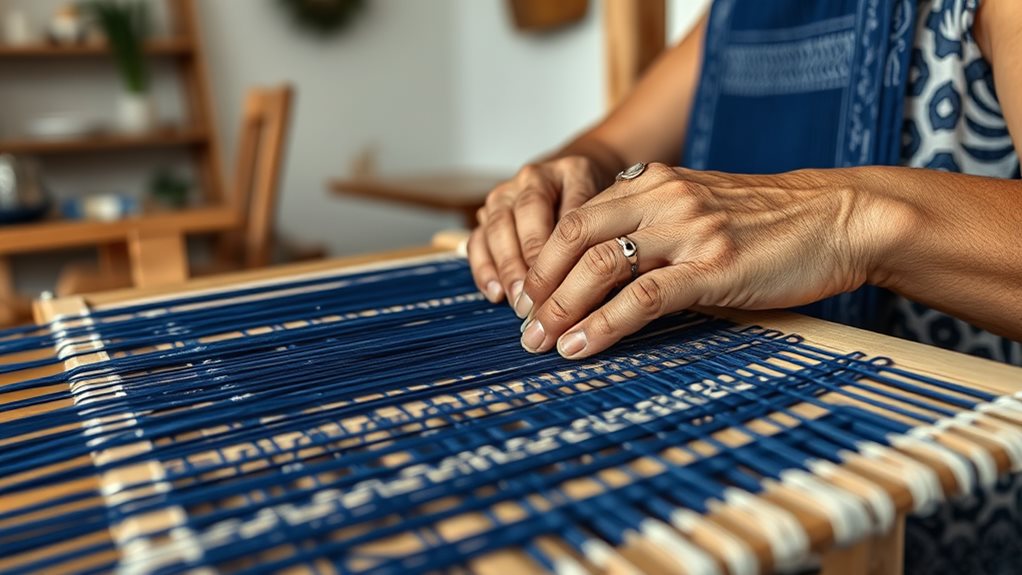
Traditional Filipino textiles are preserved through a multi-faceted approach**. This approach combines community initiatives, financial support, and educational programs**. For instance, government programs support the textile industry by fostering collaboration between artisans and designers. This collaboration enables the blending of modern aesthetics with traditional techniques.
Organizations play a vital role in preserving traditional weaving patterns**. Habi: The Philippine Textile Council is one such organization. It provides training** and promotes traditional weaving patterns, ensuring the transmission of knowledge to younger generations.
Financial support is crucial for preserving traditional weaving. This support comes in various forms:
- Direct financial aid is provided to artisans to maintain their craft.
- Economic incentives promote the preservation of traditional methods.
- Support for sustainable practices using eco-friendly materials is encouraged.
- Global exhibitions generate awareness and financial resources.
Community initiatives are also essential. Workshops and training sessions are conducted in local communities, and schools integrate traditional textile production into their curricula. Cultural events, such as 'Likha 3', showcase Filipino textiles and highlight their beauty and cultural value.
Documentation efforts record traditional patterns and their associated stories, enriching our understanding of the cultural narratives embedded within these textiles.
A holistic approach is key to preserving the legacy of Filipino textiles. This approach combines governmental support, organizational initiatives, and community involvement, creating a sustainable framework for preservation.
Questions and Answers
What Tools Were Used in Early Weaving?
Early weaving tools included backstrap and pedal looms, as well as spindle whorls. These tools were crucial in shaping ancient textile creation. The backstrap loom, for example, was a simple frame with a strap that the weaver wore around their waist to keep the fabric taut. The pedal loom, on the other hand, used foot pedals to raise and lower the warp threads. Spindle whorls were small discs or weights attached to a spindle, which helped to spin yarn into thread.
Early weaving techniques involved ikat dyeing and beaten bark cloth production. Ikat dyeing was a technique where the yarn was dyed before weaving, resulting in unique patterns and colors. Beaten bark cloth production involved pounding the bark of trees to create a soft, fabric-like material. These techniques allowed ancient weavers to create a variety of textiles with distinct textures and designs.
How Did Trade Impact Textile Production?
Trade significantly impacted textile production by introducing new materials and techniques. This cultural exchange occurred as various regions traded with one another, sharing their unique methods and resources. For example, the Silk Road brought Chinese silk production techniques to the Middle East and Europe, influencing the development of local textile industries.
As a result of trade, textile production shifted towards export. This shift led to changes in both the styles of textiles produced and their social status. For instance, the demand for Indian calico in Europe during the 17th and 18th centuries led to an increase in its production, making it a highly sought-after fabric. Similarly, the introduction of new materials like cotton from India and wool from England influenced the production of textiles in other regions, changing the styles and social status associated with these fabrics.
The economic influence of trade on textile production was substantial. The increased demand for textiles led to the growth of industries and the development of new manufacturing techniques. In addition, the social status associated with certain textiles changed as they became more widely available. For example, the production of intricately patterned fabrics, once reserved for royalty, became more accessible to the general population, reducing their exclusivity and social status.
Which Fibers Are Most Commonly Used Today?
Cotton, silk, and sustainable fibers are the most commonly used fibers today. Cotton varieties, such as Egyptian and Pima cotton, are popular for their softness and durability. Silk production, primarily from sericulture, is also widely used for its luxurious texture and natural temperature regulation. Sustainable fibers, including hemp, bamboo, and organic cotton, are gaining popularity due to their eco-friendly properties and reduced environmental impact.
Are There Any Unique Dyeing Techniques?
Unique dyeing techniques exist using natural dyes. Natural dyes are derived from plants, insects, and minerals. Traditional methods, such as Shibori, Batik, and Ikat, have been passed down through generations and involve various techniques to create distinctive colors and patterns. For example, the Shibori method involves folding and binding fabric to create unique patterns, while Batik uses wax to resist dye and create intricate designs.
What Challenges Face Weavers Now?
Weavers face numerous challenges in the modern era.
The adoption of modern technology is a significant challenge. Mastering computer-aided design software and automated looms can be costly and time-consuming. This can hinder the ability of weavers to compete with larger, more technologically advanced manufacturers.
Cultural preservation is another issue. As traditional weaving techniques and patterns are passed down through generations, the risk of cultural heritage loss increases if these traditions are not properly documented and preserved. This can result in the loss of unique cultural identities and the homogenization of textile designs.
High production costs also pose a challenge. The cost of raw materials, such as high-quality yarns and threads, can be prohibitively expensive for small-scale weavers. Additionally, the time and labor required to create intricate, handmade textiles can drive up costs and make it difficult for weavers to compete with mass-produced textiles.
Competition is another significant challenge. The rise of fast fashion and mass-produced textiles has led to a decline in demand for handmade, bespoke textiles. This shift in consumer preferences has forced many weavers to adapt their business models and find new markets for their products.
Limited market access and fluctuating demand also impact weavers. The lack of access to global markets and the inability to adapt to changing consumer preferences can make it difficult for weavers to sustain their businesses.